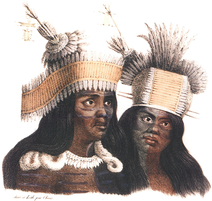The Rich Culture Of Pre-Spanish California
The Rich Culture Of Pre-Spanish California (Part 1 of a 2 Part Blog) September 2021

Although the formal history of the San Francisco Bay Area begins with the arrival of the Spanish in the mid-1700s, the reality is that the region has a history that dates back not just centuries but millennia before the first Europeans arrived. Recent historical research and the growing awareness of the need to know the real history of America, not just the history that began at Plymouth Rock or the De Anza Trail, is creating an awareness of the rich and diverse culture of the people who were the original inhabitants of this country. To try and place all Native American Tribe history under one heading is like trying to treat European history as that of one single people. It will not work because although it is one continent, the people who have lived here for thousands of years did so as separate and distinct tribes.
The Ohlone
The first inhabitants of the area, from the coastal plains to the Santa Cruz mountains, were the Ohlone. Archaeological evidence show that they have been here for at least 13,000 years. As with the overall indigenous population, these Native people did not look upon themselves as one single society. Instead, they were divided into multiple distinct tribes. While there were many commonalities among the tribes, each one had its own distinct dialect, cultural traditions, and societal norms. Although independent, the Ohlone tribes intermarried, communicated, cooperated, and traded with each other. Among the most prominent of the Ohlone tribes was (and is) the present-day Muwekma Ohlone Tribe, the BIA aboriginal and historic, previously federally recognized tribe of the San Francisco Bay Area.
The Muwekma Ohlone
The Muwekma were not a nomadic tribe, as were many of those in other parts of the continent. They lived as part of an organized socially structured permanent and semi-permanent villages with a distinct culture and way of life of its own.
The Diet: They lived in large villages of up to 500 people that were their home base and from where they set forth to gather and hunt food. Their diet consisted of acorns, grass, wildflower seeds, fish, fowl, and small games such as rabbit and deer. The staple included grass seeds, fruit, tubers, acorns, fish, and a variety of game animals. These foods were ground into a paste that formed the basis of a soup or which was baked into loaves like bread. Acorns, being rich in proteins, carbs, and fat, served as part of their nutritious diet. The Ohlone tribes understood the natural world surrounding them and knew the seasons as to when to harvest, when the salmon and steelhead would run, and the best times and places to hunt.
The Village: The Muwekma Ohlone villages were groups of structures made of a willow pole frame covered by tule rushes to form the sides and roof. Other houses on the West Bay were covered with Redwood bark. The size varied from about 6 to 20 feet, depending on the size of the family that lived in it. The simplicity of the structure had a great benefit. When a dwelling became worn out, it was simply abandoned and a new one was constructed. They regularly conducted controlled burns of the nearby grassland to limit the growth of the inflammable chaparral shrubs that posed a danger to the villages. This also resulted in the growth of fresh shoots and grasses yield large amounts of seeds that attracted both large game such as elk, deer and antelope, and small game which made hunting easier.
The history of the Muwekma Ohlone culture is too long to be covered in a single blog such as this. The rest of the story will be contained in part 2.